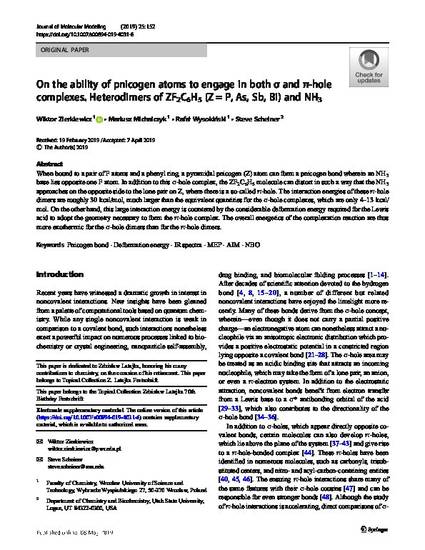
When bound to a pair of F atoms and a phenyl ring, a pyramidal pnicogen (Z) atom can form a pnicogen bond wherein an NH3 base lies opposite one F atom. In addition to this σ-hole complex, the ZF2C6H5 molecule can distort in such a way that the NH3 approaches on the opposite side to the lone pair on Z, where there is a so-called π-hole. The interaction energies of these π-hole dimers are roughly 30 kcal/mol, much larger than the equivalent quantities for the σ-hole complexes, which are only 4–13 kcal/mol. On the other hand, this large interaction energy is countered by the considerable deformation energy required for the Lewis acid to adopt the geometry necessary to form the π-hole complex. The overall energetics of the complexation reaction are thus more exothermic for the σ-hole dimers than for the π-hole dimers.
